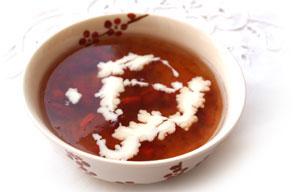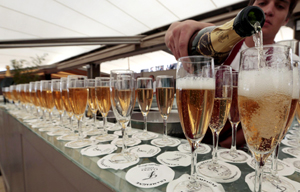
 |
|
Pierre Herme has become known as the "Picasso of Pastry". |
A visit to the chef's Paris workshop in April sees the 51-year-old busying himself before his Hong Kong debut. When an assistant brings in a tray of macaroons, Herme looks down toward the collection lovingly and begins to explain what each one is about before graciously offering them around the room.
"For this one," he says, picking up a Jardin Japonais, "I have been working on a flavor of the cherry blossom. In Japan they use cherry blossom preserved in salt to season rice. It has a very specific flavor so I copied this flavor with cherry puree, tonka bean and lemon zest. This one is chocolate from Peru and from one specific group of growers in Peru."
When the blackcurrant macaroon comes, Herme explains he uses three tiny pieces of the fruit in each to add a shot of acidity to the experience.
Herme says he first began working with macaroons as an apprentice with the acclaimed Paris-based pastry chef Gaston Lenotre in the 1970s. What he found at the time, he says, is that the macaroon was being restricted by a set selection of traditional flavors namely chocolate, vanilla, coffee and raspberry.
And so Herme set about making a change. These days the varieties on offer can tempt you with everything from a mixture of caramel and rose (the Jardin Sucre) to apricot and pistachio (Arabesque). Herme believes it is such attention to details - to specific and very different flavors - that has made his macaroons so popular.
"What we want to do with each macaroon is make each one specific," says Herme. "It is very time consuming, it is labor consuming, but the taste and the texture is different - and it is special."
The attraction to the macaroon is universal, Herme believes, being so small and so delicate that it provides the perfect snack, or an accompaniment that won't spoil your appetite for the main courses.
"The macaroon is a small little piece. You can eat it and have different sensations of texture and taste," he says. "You can give it as a gift, like chocolate, and when you come with macaroons to someone's house for dinner, you don't really compete with the dessert that goes with the dinner. It's colorful, it's flavorful. Some people say that it is a trend, I don't think it is a trend. The macaroon is part of the French tradition."
 |
|
Macaroons are sold at Raffles Paris. Photos Provided to China Daily |
|
 |
|

2013 Chinese New Year |

Hidden dragons, crouching tigers |

Soap beans, silver ears and peach gum |

Special:Winter Solstice |

Oysters draw thousands to Bluff, New Zealand |

Int'l Tea Convention opens in Pu'er, SW China |

'Wembley winner' pastries in Dortmund |

Champagne feast during Cannes Film Festival |